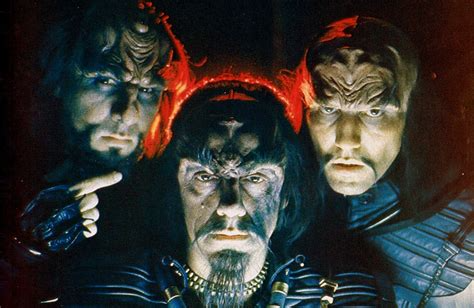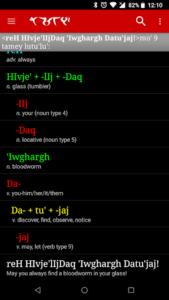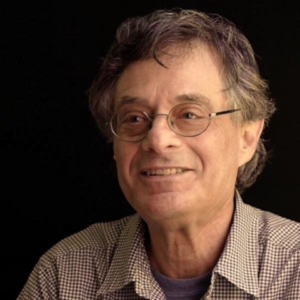Klingon and Other Constructed Languages in the Real World
Marc Okrand
Linguist and Language Author
Sponsored by PSW Science Member AC Charania
About the Lecture

People have been making up – or constructing – languages probably for as long as people have been talking. They’ve been doing this for any number of reasons, ranging from intellectual curiosity about how languages work to keeping secrets. Most of these constructed languages (or “conlangs”) are for personal use only, but some are intended for a community of users, or even, in the case of languages like Esperanto, for the whole world.
Among the conlangs are those developed to fit into fictional worlds, to be elements in novels or films, for instance. When the language creator (or “conlanger”) and the story creator are not the same, the language is, by necessity, shaped in part by what the non-conlanging storyteller brings to the endeavor. When the storytelling is a collaborative effort, as is the case with movies, influences on the language come from multiple sources, and attributes of the language are affected by all of them. Though presumed to be restricted to their respective created worlds, sometimes a language escapes into the “real world,” where its devotees exert even more pressure on its form and usage.
Klingon is a conlang invented for a race of alien beings featured in Star Trek movies and television programs. When these characters first appeared in Star Trek in the 1960’s, “alien” languages in Star Trek and most other science-fiction films and television programs were almost always just gibberish. In 1984, however, the producers of Star Trek III: The Search for Spock chose to have the Klingon antagonists in that movie speak something that felt authentic, a language not resembling any language on Earth but one that would be perceived as an actual language and not just random noise. To meet this alien-yet-natural goal, a language was constructed by following but also violating various linguistic principles while maintaining consistency in both vocabulary and grammar.
The resulting linguistic structures were put to the test when filmmaking began and the language started to be actually used. Actors’ occasional mispronunciations of the unfamiliar words, along with dialogue changes that came about during the filming and editing of the film, led to additions and alterations to the language not anticipated when the language was originally constructed, but that still had to follow the conlang’s rules. Klingon is not unique in this regard. Other languages constructed for movies or television programs are subject to the same sorts of influences.
As Star Trek programming continued, Klingon was featured more and more frequently, leading to the creation of more vocabulary (and, though less often, grammar). Fealty to what had come before varied from writer to writer, resulting in ever more linguistic innovation.
At the same time, interest in the language was growing among fans of Star Trek — and among fans of language in general, constructed and otherwise. A community of Klingon speakers arose and expanded, and, as a result, the language started being used in more general contexts. No longer restricted to conversations appropriate for alien warriors in outer space in the 23rd century, the milieu for which the language was designed, Klingon was shifting to become a vehicle for composing original songs and stories, translating works of literature, or just talking about everyday concerns on 21st century Earth.
The issues involved in bringing Klingon “back” to the 21st century are not unlike some of the challenges faced by those working to bring back — or, perhaps, bring forward — indigenous languages that had been considered extinct.
As Klingon marks its 40th anniversary this year, the attention of its users is turning to the future, with discussions centered around what constitutes “proper” Klingon, where new words come from, who decides, who innovates. The form of the language increasingly rests on what the speakers deem appropriate, not what the language’s creator decrees. That is, the language is behaving like a language.
Selected Reading & Media References
Adams, Michael (ed.), From Klingon to Elvish: Exploring Invented Languages (Oxford: Oxford University Press, 2011)
Okrand, Marc, The Klingon Dictionary (New York: Pocket Books, 1985, 1992)
Okrand, Marc, Klingon for the Galactic Traveler (New York: Pocket Books, 1997)
Okrent, Arika, In the Land of Invented Languages: Adventures in Linguistic Creativity, Madness, and Genius (New York: Spiegel & Grau, 2009)
Peterson, David J., The Art of Language Invention: From Horse-Lords to Dark Elves, the Words Behind World-Building (New York: Penguin Books, 2015)
Wahlgren, Yens The Universal Translator: Everything You Need to Know About 139 Languages That Don’t Really Exist (Gloucestershire: The History Press, 2021)

About the Speaker

Marc Okrand is a linguist who devised the constructed language Klingon heard in Star Trek motion pictures and television shows beginning with the film Star Trek III: The Search For Spock (1984). In addition to Klingon, he created dialogue in Vulcan and other languages for several Star Trek movies and television shows and the Atlantean language heard in the Walt Disney animated feature Atlantis: The Lost Empire (2001).
His graduate work focused primarily on North American Indian languages of the west coast, and he conducted research on some of those languages while a postdoctoral fellow at the Smithsonian Institution. He formerly held various managerial and administrative positions at the National Captioning Institute, where he helped develop and inaugurate the national closed-captioning service.
He is the author of The Klingon Dictionary, an introduction to the grammar and vocabulary of the language, and Klingon For the Galactic Traveler, a guide to the finer points of the language, including specialized terminology, slang, idioms, dialects. He can be heard describing various aspects of the language and its effective use in the audio books Conversational Klingon and Power Klingon. He also provided Klingon dialogue and contributed to the language lab portion of the computer game Star Trek: Klingon. He translated the libretto for the Klingon opera ’u’ that premiered in The Netherlands in 2010 as well as the expanded version of the opera’s story in paq’batlh: The Klingon Epic. He translated and recorded a Klingon version of a self-guided tour of the Smithsonian’s National Air and Space Museum for their Go Flight app, and he appears in and is an associate producer of the documentary Conlanging: The Art of Crafting Tongues (2017).
In addition to his books on Klingon, he has published articles about both his linguistic research and closed captioning in several professional journals and anthologies.
He has given talks about Klingon and constructed languages at venues ranging from museums and universities to the Library of Congress, the Peace Corps, and the National Security Agency, as well as Star Trek and other science fiction conventions.
He has a BA in linguistics from the University of California, Santa Cruz, and a PhD in linguistics from the University of California, Berkeley, where he was a National Science Foundation Fellow.
Minutes
On October 4, 2024, Members of the Society and guests joined the speaker for a reception and dinner at 5:45 PM in the Members’ Dining Room at the Cosmos Club. Thereafter they joined other attendees in the Powell Auditorium for the lecture proceedings. In the Powell Auditorium of the Cosmos Club in Washington, D.C., President Larry Millstein called the 2,502nd meeting of the Society to order at 8:01 p.m. ET. He began by welcoming attendees, thanking sponsors for their support and announcing new members. Scott Mathews then read the minutes of the previous meeting which included the lecture by Kirby Runyon, titled “Space Tourism: Enabling a Space-Faring Civilization”. The minutes were approved as read.
President Millstein then introduced the speaker for the evening, Marc Okrand. His lecture was titled “Klingon and Other Constructed Languages in the Real World.”
The speaker began by presenting a hoax, wherein it was claimed that the company Rosetta Stone had released a product to teach the Klingon language. Okrand said that the hoax worked because it was plausible. Klingon had grown from a few sentences made up for a film, into a language spoken by many thousands of people, at various degrees of fluency, all around the world.
He then presented some of the history of constructed languages, particularly with respect to science fiction on television and in movies. He said that in the early days of film and television, aliens almost always spoke English (or the native language where the film was produced), or they “just made stuff up…it was gobbledygook”. That gobbledygook was based on the phonetics and syllables of real human languages. Okrand referred to these as “fake languages”, indicating that they had no structure or grammar, just sounds. Klingon, he said, has all the elements and characteristics of a natural language, and is therefore a “constructed language” or “con-lang”.
The speaker gave examples of several con-langs, created for a variety of reasons, throughout history. These included: Lingua Ignota, created by Hildegard von Bingen, a 12th century German nun, a philosophical language, developed by John Wilkins, one of the founders of the Royal Society, in the 16th century, and perhaps the most well-known con-lang, Esperanto, created in the 19th century by Ludwig Zamenhof. He then discussed con-langs created for research purposes: constructed languages used by linguists and brain scientists to study various aspects of communication and learning. He mentioned the fictional languages created by J.R.R. Tolkien in The Hobbit and The Lord of the Rings. Okrand argued that modern Hebrew can be considered a con-lang, by virtue of the fact that it was revived and subsequently codified by Eliezer Ben-Yehuda in the late 19th century.
The speaker then described a number of fictional, but properly constructed languages, made for television and movies. These included “The Land of the Lost”, “The Quest for Fire”, Disney’s “Atlantis”, the Na’vi language of “Avatar”, and Klingon, first constructed for the movie “Star Trek III”. Okrand discussed the fact that he deliberately tried to make Klingon a non-human language, using not only uncommon sounds, but also changing the “word order”, using Object-Verb-Subject instead of the more common word orders used in most human languages. He went on to discuss the ways in which the movie director’s preference and the mistakes made by the actors forced him to change both the vocabulary and the structure of Klingon. This evolution of the Klingon language has continued with the subsequent Star Trek television shows: Next Generation, Voyager, and Deep Space Nine. He gave a specific example of the Klingon honor sword, which is now known as a “bat’leth”. Okrand said that producers and directors looked up the words “honor” and “sword” in the Klingon dictionary, but that a combination of typing errors and mispronunciation led to a word constructed from non-Klingon sounds. Once the word was used on-screen, it was ipso facto just as legitimate as any other Klingon utterance. He justified these changes by saying that all natural languages evolve over time.
The speaker then addressed the growth of the Klingon language, which coincided with the publication of the first Klingon dictionary and the growth of the internet in the early 1990’s. Okrand said that during this period, significant numbers of people began to study and analyze the language, and “a whole new sub-culture formed, and a small segment of this sub-culture became absolutely fluent.” They created the Klingon Language Institute and began publishing a peer-reviewed journal. They organized annual conventions for Klingon speakers in cities around the world. Okrand showed examples of several famous works of literature that have been translated and published in Klingon, including the works of Shakespeare.
The speaker then discussed how new words are added to the Klingon language, largely motivated by Klingon speakers wanting to discuss ideas and objects found in the modern world, which are not mentioned in Star Trek. He described how Klingon speakers created words for things like bicycles, pineapples, scarecrows, and the Corona Virus. Okrand noted that the Klingon Language Institute recognizes him as the ultimate authority on the creation of new Klingon words.
The speaker concluded his talk by saying that Guinness World Records declared that Klingon is the worlds largest fictional language, and although there is still no course on Rosetta Stone, you can study Klingon on “Duolingo”.
The lecture was followed by a Question and Answer session:
A guest asked about systematic efforts to expand the Klingon vocabulary. Okrand indicated that there has been much discussion within the Klingon speaking community about standardizing new vocabulary and the possible release of an updated Klingon dictionary, but that this was still in the works. He indicated that the biggest requests are for scientific vocabulary.
A member asked how many words are in the Klingon language. Okrand responded that the original dictionary contained about 2,000 words, but that about 4,000 to 5,000 words are now recognized. Unfortunately, this larger vocabulary is not currently available in a single, printed source.
A member asked if the speaker was impressed with the translation ability of ChatGPT and other AI’s. Okrand responded that he was very impressed. He qualified this by saying AI translations are not perfect, but are nonetheless impressive.
After the question and answer period, President Millstein thanked the speaker and presented him with a PSW rosette, a signed copy of the announcement of his talk, and a signed copy of Volume 1 of the PSW Bulletin. He then announced speakers of up-coming lectures, made a number of housekeeping announcements, and invited guests to join the Society. He adjourned the 2,502nd meeting of the society at 9:46 pm ET.
Temperature in Washington, DC: 18.3° Celsius
Weather: Mostly cloudy
Audience in the Powell auditorium: 61
Views of the video in the first two weeks: 427
Respectfully submitted, Scott Mathews: Recording Secretary